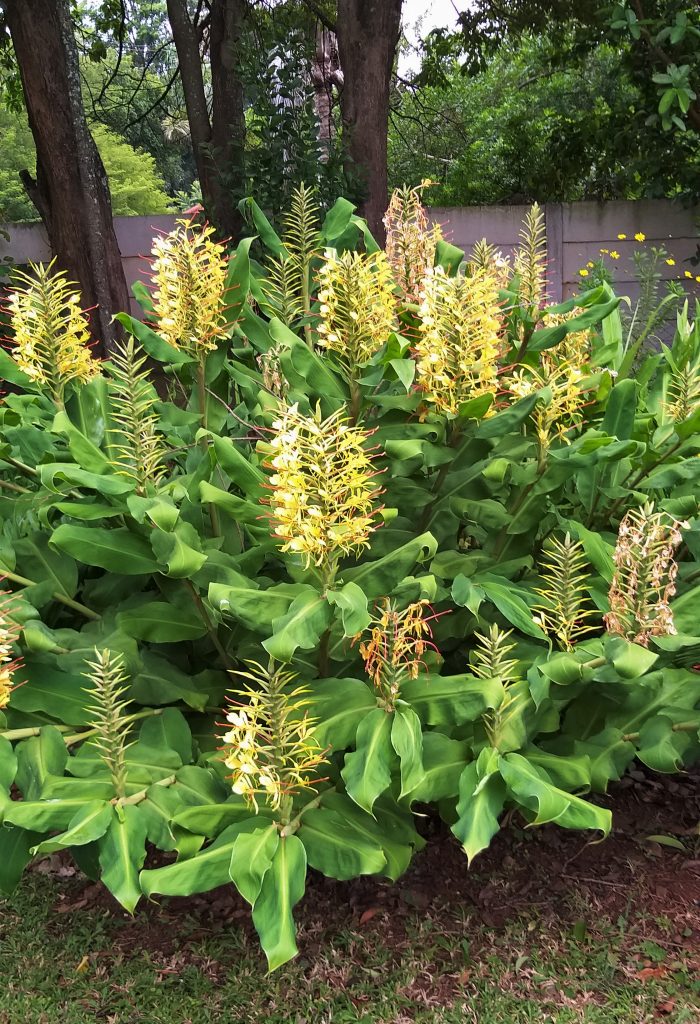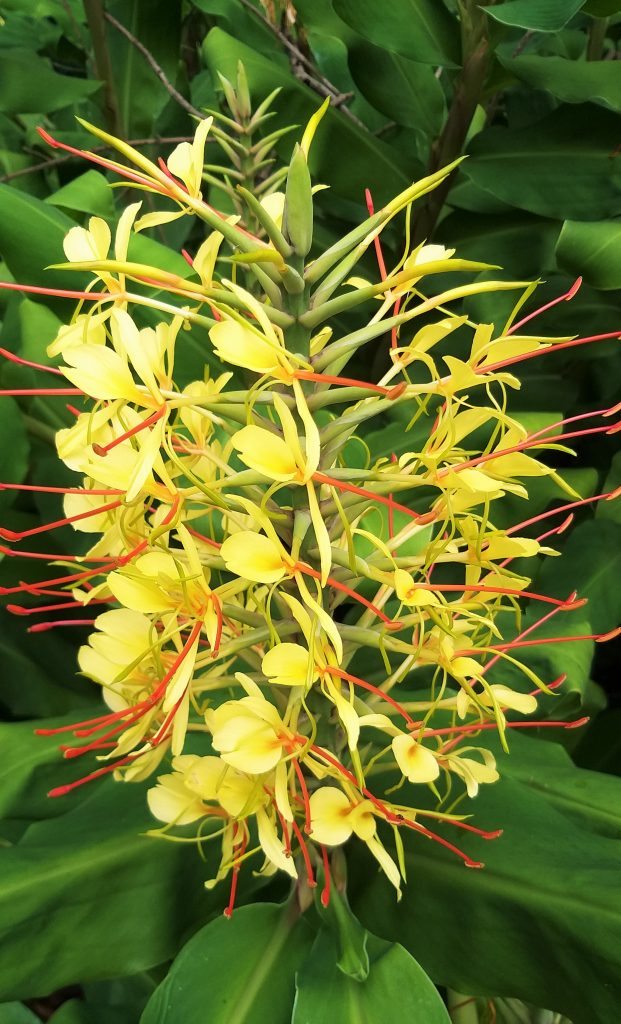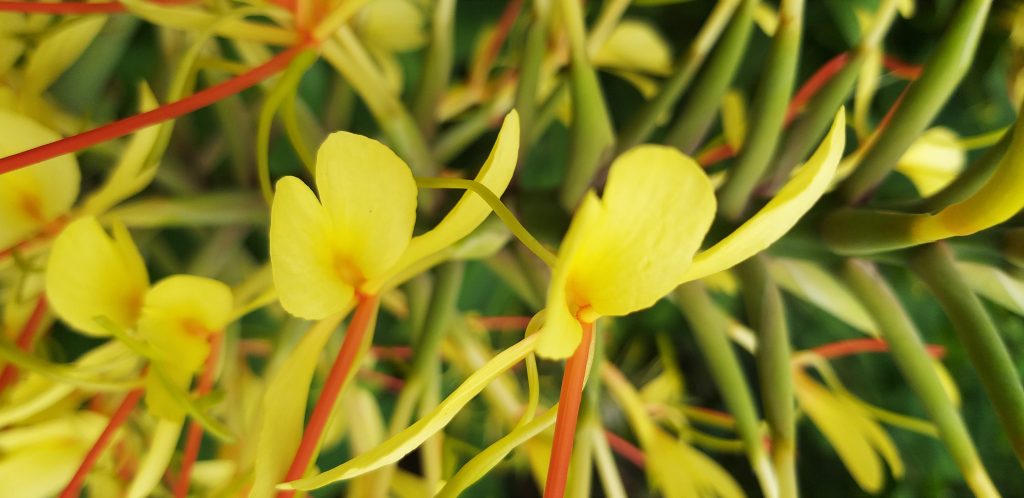By Morag Flight
This plant in the ginger family (Zingiberaceae) and is native to the eastern Himalayas. It is a popular landscape plant with its fragrant flowers and large foliage. It can grow quite tall and is a rapid spreading plant reproducing vegetatively by rhizomes.

The leaves are attractive, being glossy green on the upper
surface and powdery white below. Each flower has yellow petals and a prominent
long red-orange stamen. Up to 50 flowers are borne at the tips of the stems.
The bright yellow flowers, each with a single, prominent stamen, emerge from
cylindrical cones of green bracts. The
flowers have a strong, sweetly scented fragrance.
The foliage of Kahili Ginger is dramatic and architectural, so it looks great even when not in bloom. Combine it with dark-leaved Elephant Ears, tall Papyrus and colourful annuals to bring an exotic look to a landscape.
This ginger needs rich soil and plentiful water throughout the year to achieve the most luxuriant growth. Mine is grown in partial shade but does enjoy full sun. Water and fertilise it regularly during the growing season, but cut back after flowering. Although it tolerates short periods of drought, it does not fare well in standing water.

This species is propagated by division or from seed. The rhizomes are easily divided with a sharp knife, making sure there is one or more growing tip on each section. Allow the cut rhizomes to dry for a day or two before planting. Water sparingly until new shoots emerge from the soil. Growing from seed requires several years to get blooming plants. Seeds should be planted as soon as they are ripe and soaked for a few hours in warm water before planting. They should germinate in three – four weeks.
Other similar species that are common include White Ginger (H. coronarium, with short clusters of white flowers with white stamens), Yellow Ginger (H. flavescens, with short clusters of pale yellow flowers with yellow stamens) and Red Ginger (H. coccineum, with elongated clusters of red, salmon or pink flowers), as well as hybrids between these species.

